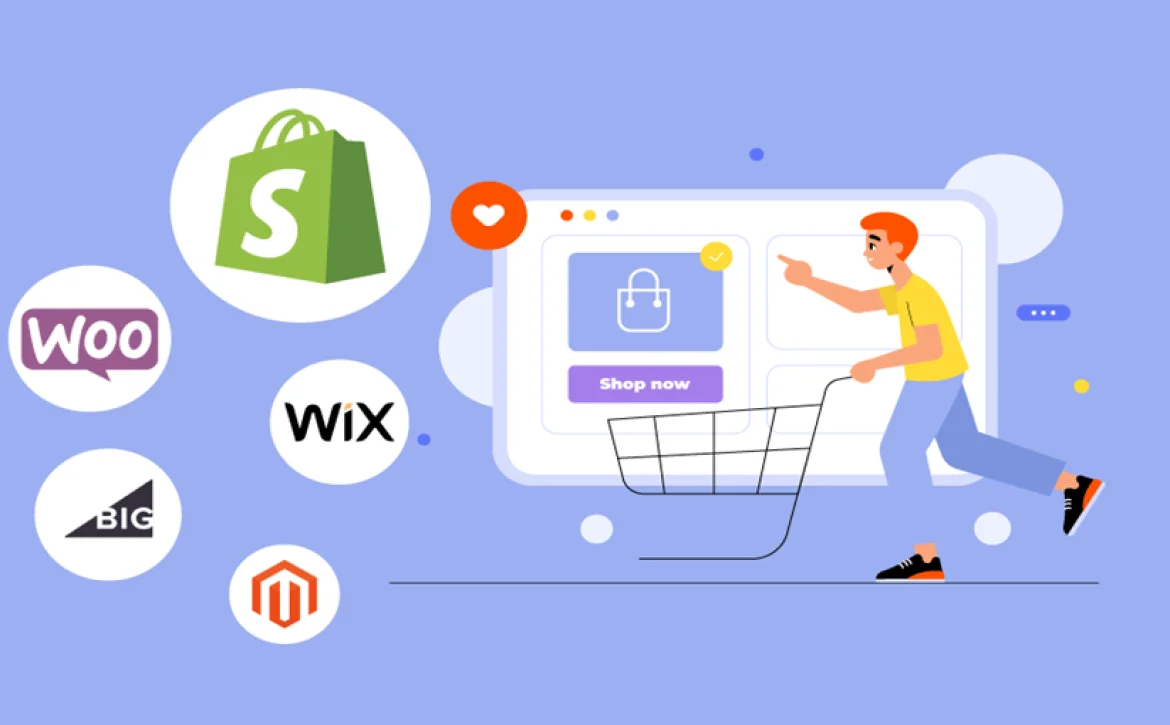How E-Commerce Solutions Transform Online Shopping
Imagine walking into a store where every shelf is arranged exactly the way you like, the products you love are always in stock, and checkout takes less than a minute. That is the kind of experience online shoppers crave, and it has become possible because of modern e-commerce solutions. Online shopping is no longer about simply buying something from a website. Today it is about convenience, personalization, speed, and trust. If you think about the way people shop today, it is clear that customers are in control. They want flexibility to browse from their phones while waiting for a bus, they want recommendations that match their style, and they want quick delivery with clear communication at every step. Traditional online stores cannot keep up with these expectations without the right tools. This is where an e commerce solutions company steps in, offering advanced systems and strategies that bring online shopping to life.
From seamless payment options to intuitive website designs, e-commerce solutions services are making the digital marketplace more human. They help businesses understand customer behavior, respond faster to needs, and create shopping experiences that feel effortless. At the same time, shoppers feel valued because their journey is smooth and tailored to them. This article will explore how these solutions are reshaping the way people buy and sell online. We will look at the tools available, the best e commerce solutions in the market, and even the best ecommerce platform for beginners who want to start their journey with confidence.
The Power of E-Commerce Solutions
E commerce is no longer just about building a website. It is about creating a digital experience that reflects how customers want to shop. A strong e commerce solutions company understands this and provides services that cover everything from product listings to secure payment gateways. These services ensure that businesses can connect with buyers across devices, platforms, and regions without losing the personal touch.
One of the biggest ways e commerce solutions transform shopping is through personalization. When a platform remembers a customer’s previous choices or suggests products that fit their taste, it creates a bond of trust. This kind of customization makes people feel like the store was designed for them. It is no surprise that customers are more likely to return to a store that treats them as individuals.
Why Businesses Turn to E Commerce Solutions Services
Running an online store without professional tools is like sailing without a compass. Businesses often turn to e commerce solutions services because they provide ready made systems that save time and money. Instead of building everything from scratch, companies can rely on platforms that are already optimized for speed, design, and usability.
These services also take away the guesswork. With detailed analytics, business owners can see what products are trending, which promotions work best, and where customers are dropping off during checkout. This data driven approach allows businesses to adapt quickly, keeping customers engaged and satisfied.
Another reason businesses depend on these services is scalability. Whether you are a small boutique or a growing brand, the right e-commerce solutions grow with you. This flexibility means you can start small and expand without worrying about changing systems every few years.
Exploring the E Commerce Platforms List
When people search for the right tools to build their store, they often look for an e commerce platforms list. This list typically features a mix of options suitable for both beginners and experienced sellers. Some platforms are simple and user friendly, while others are advanced and designed for large enterprises.
The key is to choose a platform that matches your goals. If you are just starting out, you may be more interested in the best ecommerce platform for beginners. These platforms are usually easy to set up, come with built in templates, and require little to no technical knowledge. For larger businesses, more robust solutions may be needed to handle high traffic and complex product catalogs.
The Best E-Commerce Solutions for Growth
The best e commerce solutions are not just about fancy features. They are about results. They should make the shopping journey faster, safer, and more enjoyable. This could mean faster page loads, mobile friendly designs, or seamless integration with social media and marketing tools.
Businesses looking for the top 10 e-commerce platforms will notice that many share common features such as secure payments, strong customer support, and smooth navigation. The real difference lies in how well each platform aligns with the specific needs of the business. For example, some platforms may focus on creative store designs, while others emphasize automation and advanced inventory management.
For small business owners or new entrepreneurs, the best ecommerce platform for beginners is often one that allows them to launch quickly without technical stress. For established brands, the best solution may be a customizable platform that can handle thousands of daily visitors with ease.
E-Commerce Solutions: The Human Side of Digital Shopping
Behind every purchase is a human being who wants simplicity and reliability. E commerce solutions help businesses keep that human connection alive even in a digital space. Features like live chat, personalized discounts, and easy returns show that online stores care about their customers. Shoppers no longer see online buying as a cold transaction. With the right tools, it feels just as warm as stepping into a favorite local store. This transformation is why e commerce continues to grow at such a fast pace.
In the end, online shopping has become an essential part of modern life, and e commerce solutions are the driving force behind this transformation. With the help of an e-commerce solutions company, businesses can deliver smooth, personalized, and enjoyable experiences for customers. E commerce solutions services take away the challenges of managing an online store, allowing businesses to focus on growth and customer satisfaction. Whether you are browsing an e-commerce platforms list or exploring the top 10 e commerce platforms, the ultimate goal is the same. You want to find the best e commerce solutions that make shopping easier for customers and selling more efficient for businesses. For those just starting, the best ecommerce platform for beginners provides a confident first step into the world of digital commerce.



